Order Nostocales Scientific name Nostoc Rank Genus | Family Nostocaceae Higher classification Nostocaceae | |
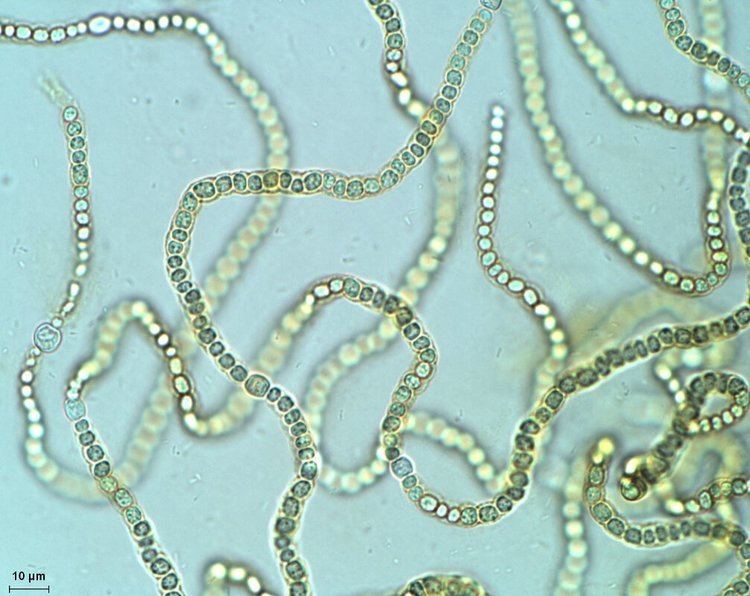 | ||
Lower classifications Nostoc commune, Nostoc punctiforme, Fat choy, Nostoc pruniforme, Nostoc verrucosum Similar Fat choy, Nostoc commune, Nostoc pruniforme | ||
Nostoc
Nostoc is a genus of cyanobacteria found in various environments that forms colonies composed of filaments of moniliform cells in a gelatinous sheath.
Contents
- Nostoc
- Nostoc lecture bsc botany by dr ruby singh parmar
- Species
- Nonscientific nomenclature
- Culinary use
- References
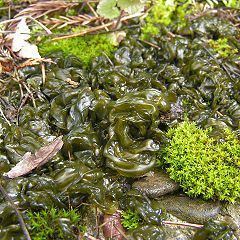
The name Nostoc was coined by Paracelsus.
Nostoc can be found in soil, on moist rocks, at the bottom of lakes and springs (both fresh- and saltwater), and rarely in marine habitats. It may also grow symbiotically within the tissues of plants, such as the evolutionarily ancient angiosperm Gunnera and the hornworts (a group of bryophytes), providing nitrogen to its host through the action of terminally differentiated cells known as heterocysts. These bacteria contain photosynthetic pigments in their cytoplasm to perform photosynthesis.
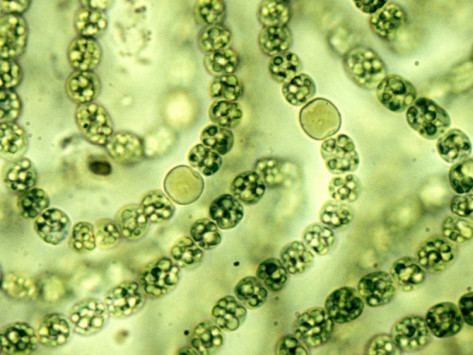
Nostoc lecture bsc botany by dr ruby singh parmar
Species
Nostoc is a member of the family Nostocaceae of the order Nostocales. Species include:
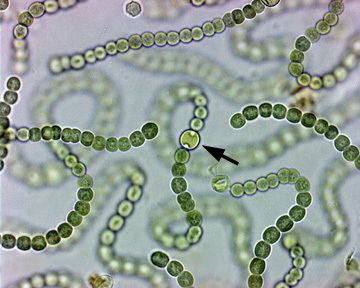
Nonscientific nomenclature
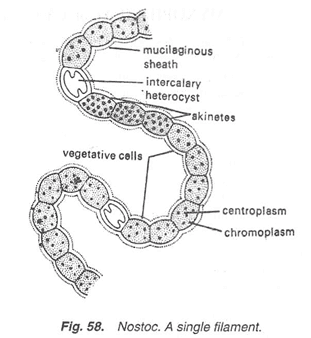
When it is on the ground, a Nostoc colony is ordinarily not seen, but after a rain, it swells up into a conspicuous, jellylike mass, which was once thought to have fallen from the sky, hence the popular names, star jelly, troll’s butter, witch's butter (not to be confused with the fungus Tremella mesenterica), and witch’s jelly.
It is known in Welsh as pwdre sêr (rot of the stars). It is also known as pydredd sêr (star-slime).
Culinary use
Containing protein and vitamin C, Nostoc species are cultivated and consumed as a foodstuff, primarily in Asia. The species N. flagelliforme and N. commune are consumed in China, Japan and Java, N. commune is also consumed in the Andes. The preferred variety in Central Asia is N. ellipsosporum.
International research has shown that fat choy (Nostoc flagelliforme), besides having no nutritional value, has also been found to contain beta-N-methylamino-L-alanine (BMAA), a toxic amino acid that could affect the normal functions of nerve cells and is linked to degenerative diseases such as Alzheimer's, Parkinson's, and dementia. While all cyanobacteria produce BMAA, the beneficial compounds may override any toxic effects.
